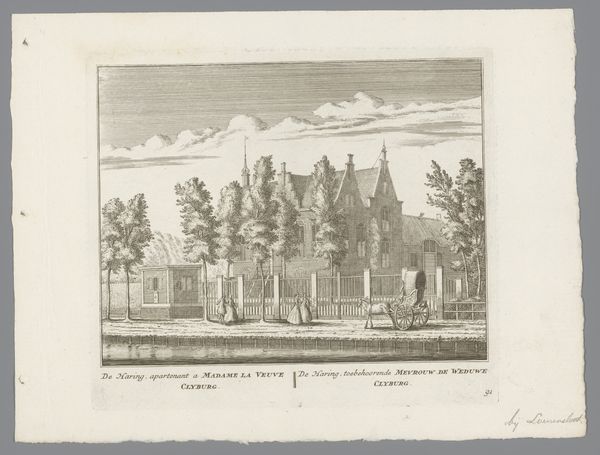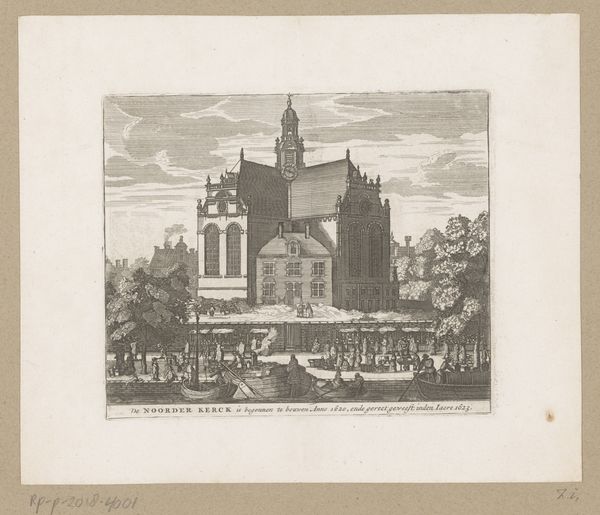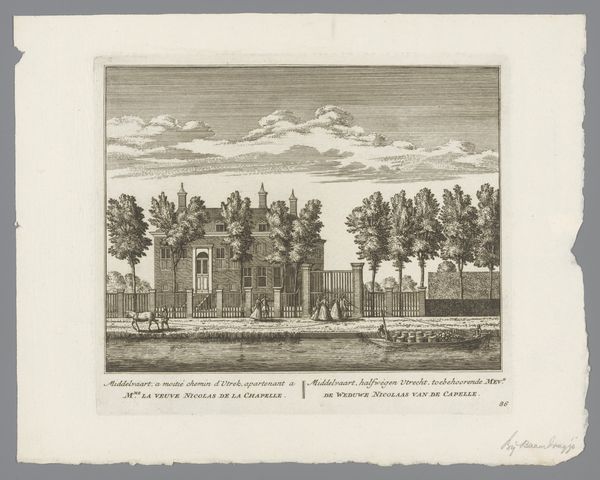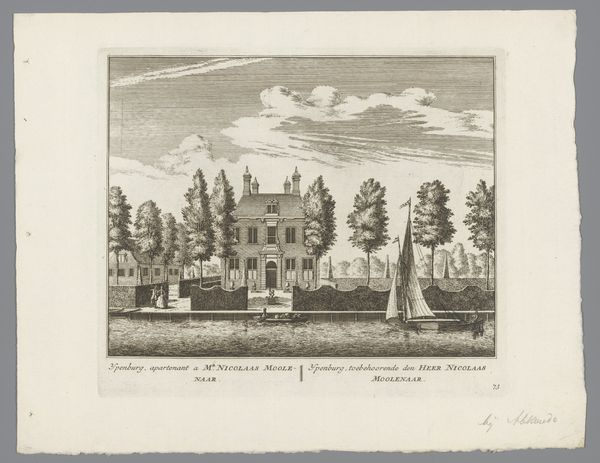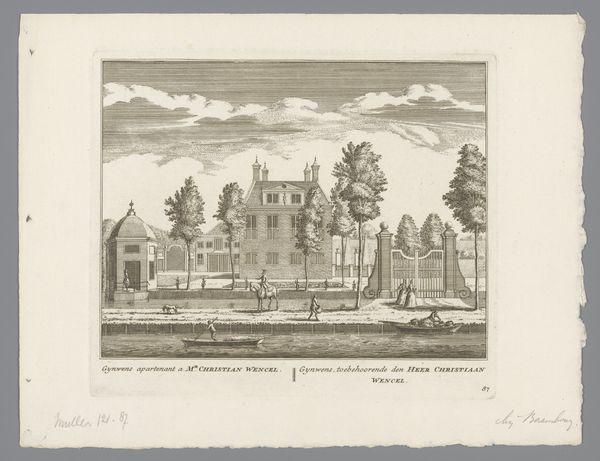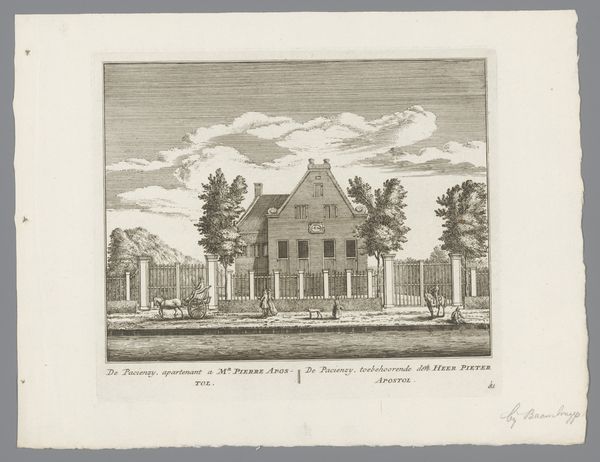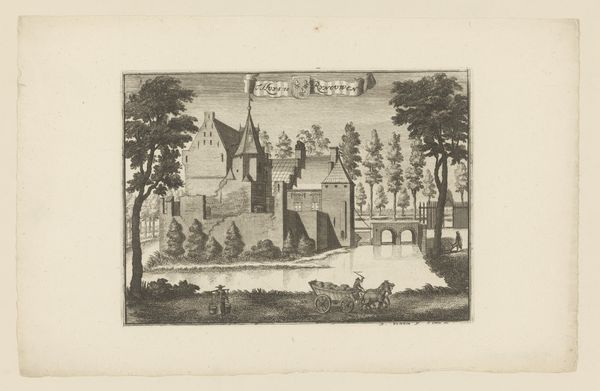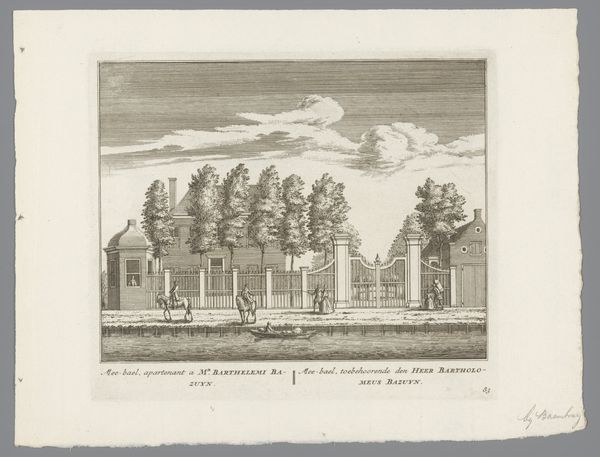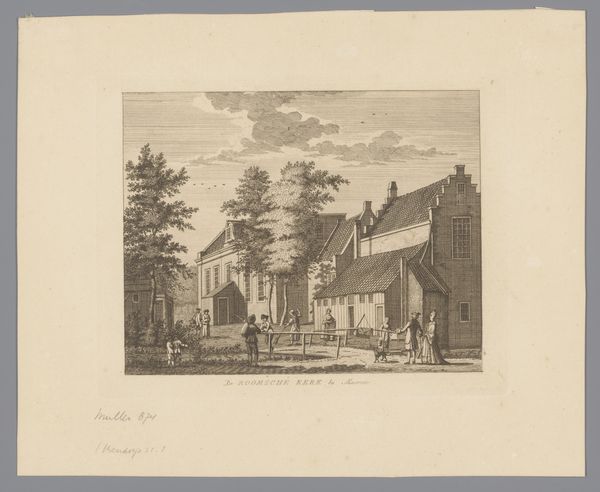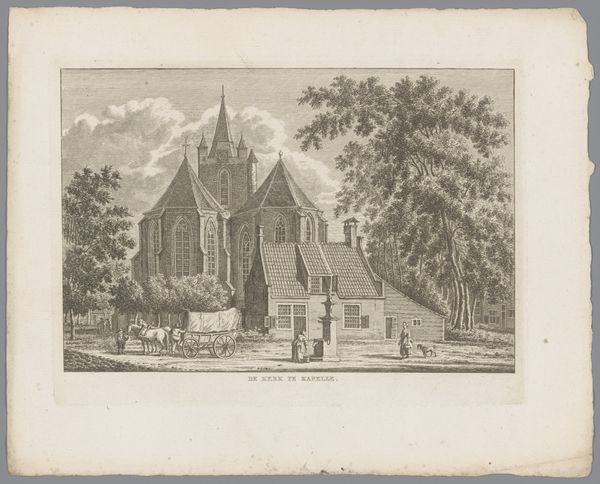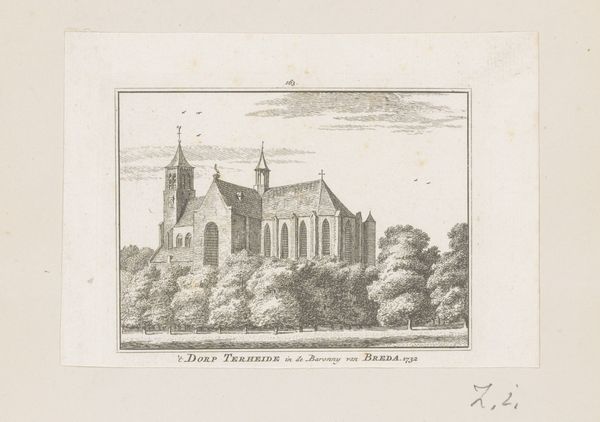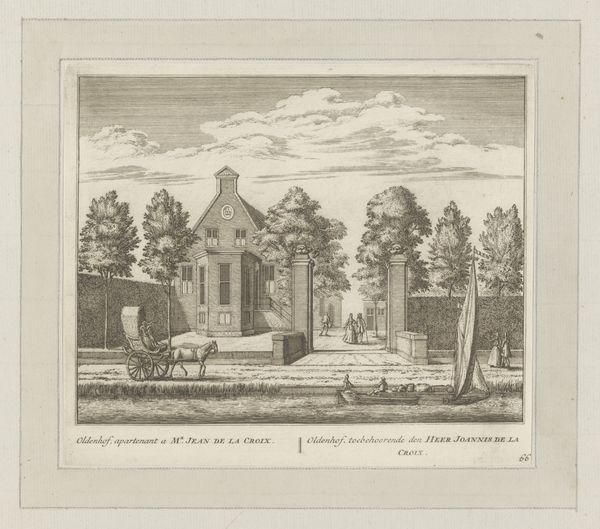
print, engraving
#
dutch-golden-age
# print
#
old engraving style
#
landscape
#
cityscape
#
engraving
#
realism
Dimensions: height 170 mm, width 200 mm
Copyright: Rijks Museum: Open Domain
Curator: Welcome to the Rijksmuseum. We’re standing before Abraham Rademaker’s "View of the Village Church of Heemskerk," created in 1728. This print offers a glimpse into the Dutch Golden Age landscape tradition. Editor: It's quite serene. The delicate lines of the engraving give it a hushed, almost contemplative quality. I notice how the trees frame the church, drawing the eye upwards to the spire. It speaks to a slower pace of life. Curator: Absolutely. Rademaker’s technique here is meticulous. Look at the layering of lines to create depth, and how he suggests textures, from the rough brick of the church to the fluffy clouds in the sky. The materiality of the engraving—the copper plate, the ink, the paper—all contribute to the final image. Editor: The church as the focal point situates the community around a particular faith, a familiar visual rhetoric of the time. Yet, it makes me wonder about the politics embedded in this seemingly tranquil village scene. Who had access to religious spaces, and who was marginalized? How might class or gender have shaped one’s experience in Heemskerk? Curator: A very good point. Consider also how Rademaker's engravings were often made as illustrations for books, making these images accessible to a growing merchant class, thus reinforcing their view of the landscape. The material process allowed for wider circulation and contributed to constructing a particular national identity. Editor: It’s essential to remember that even seemingly objective depictions of landscapes are imbued with ideologies. And furthermore the labor it took to both build and represent Heemskerk speaks to issues of community construction and collective experience. Curator: Indeed. These prints allow us to investigate the means of production and consumption in 18th century Netherlands. They remind us to look closely at both the aesthetic qualities of the image, and to engage with social and historical contexts. Editor: This small print offers an unexpected lens into both artistic practices and social questions. A peaceful Dutch village in layers of politics. Curator: An invitation to consider landscape beyond aesthetics, understanding how materials and dissemination play crucial roles.
Comments
No comments
Be the first to comment and join the conversation on the ultimate creative platform.
